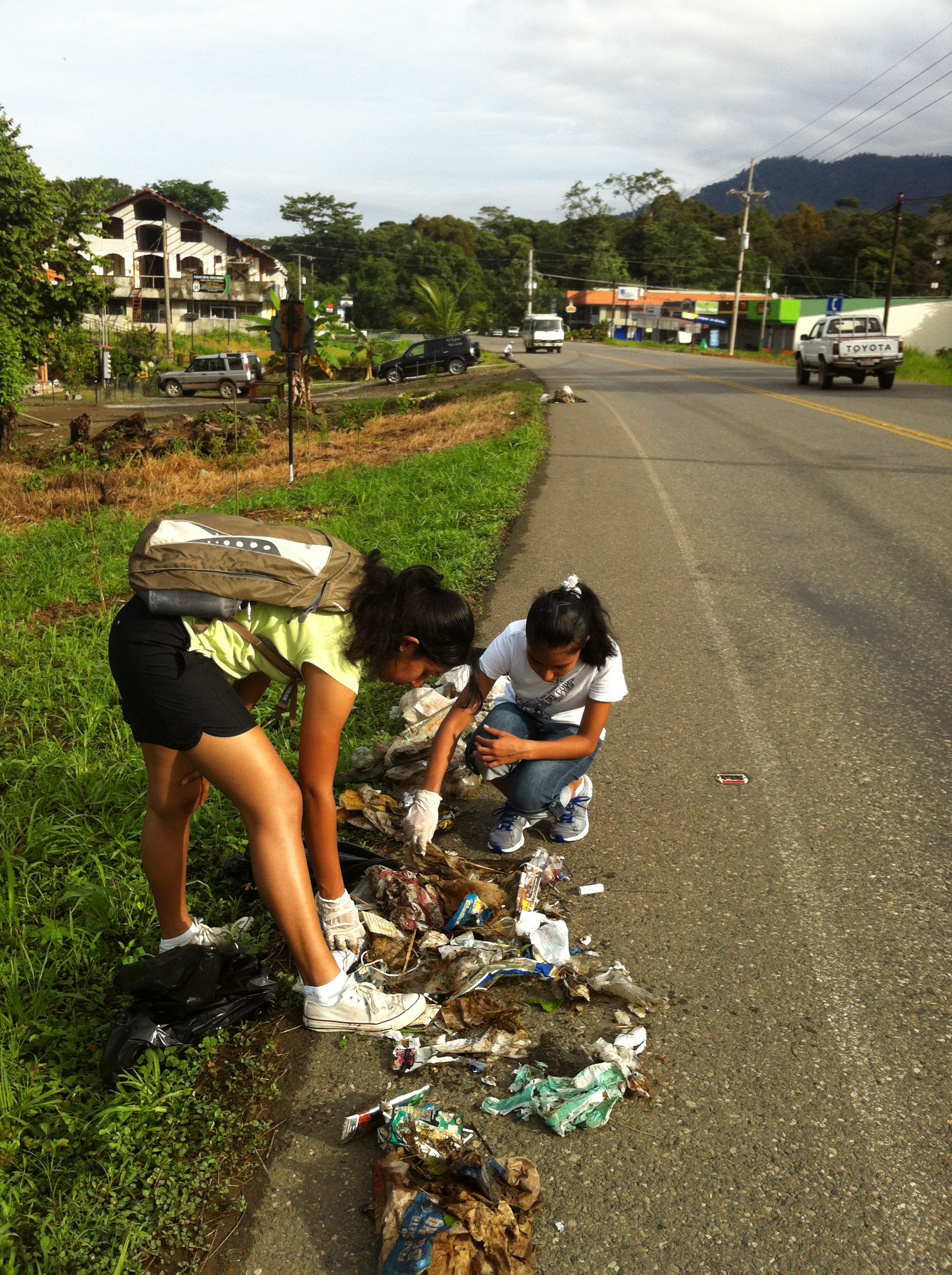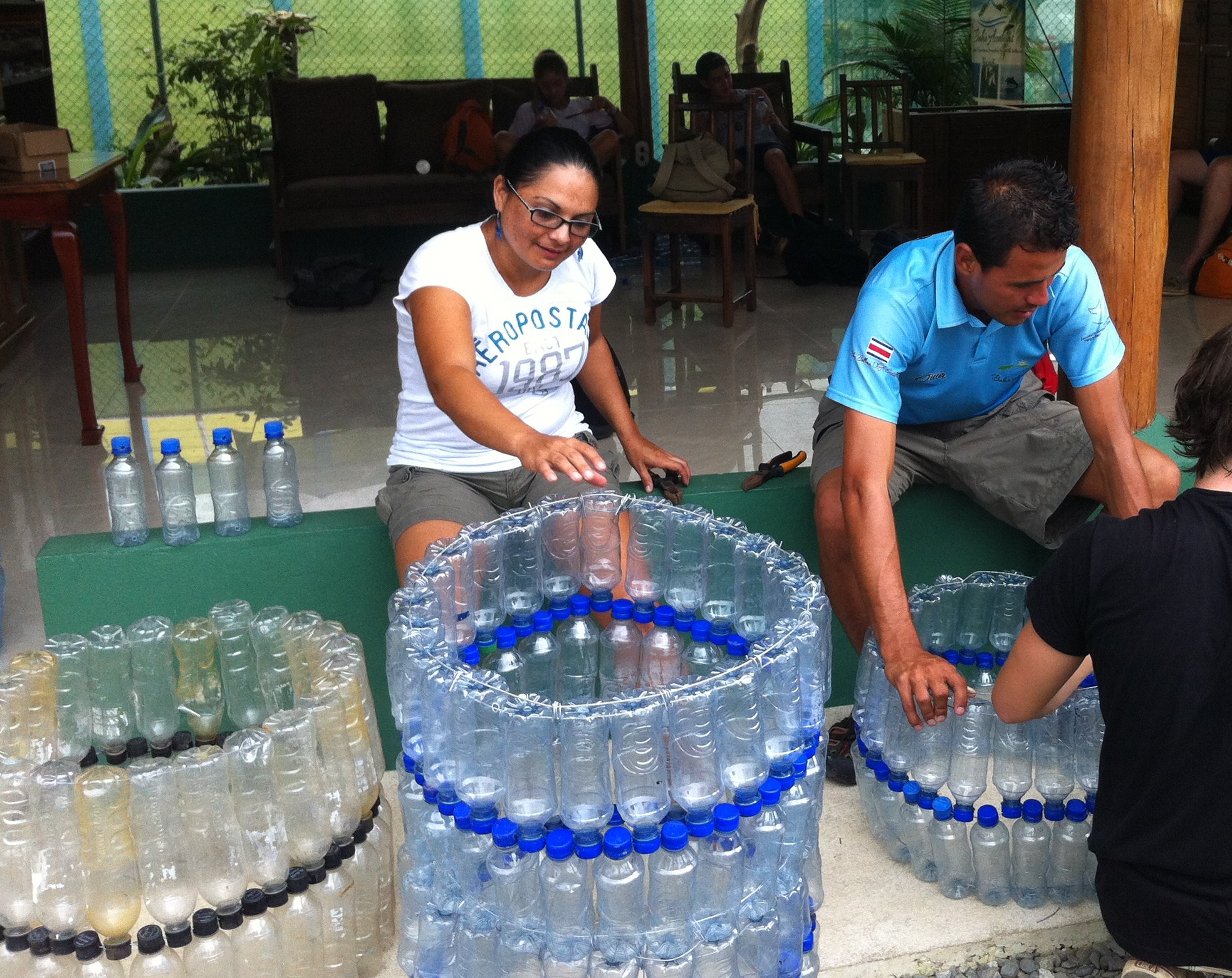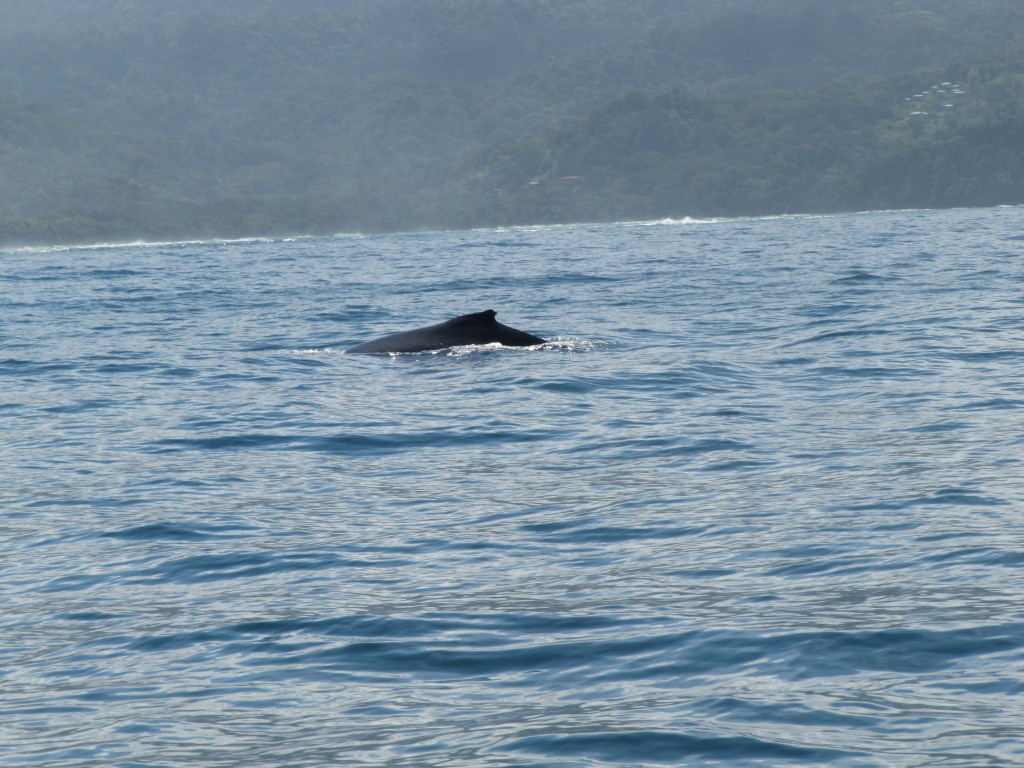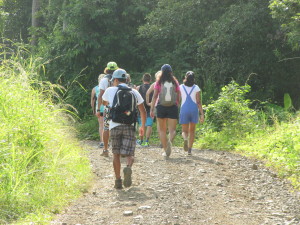I arrived in the beautiful town of Bahía Ballena a week ago, and have witnessed Geoporter work in full swing. This week, I focused on trash and whale monitoring. However, it is clear that there is potential for GPS and Geoporter analysis in many corners of Bahía Ballena.
One the trash front, we collected between the two BM supermarkets early on Friday morning. We had a great crew with us, and were able to collect along the entire stretch in two hours. As expected, we collected mainly plastic items, many of which were related to food. I began analysis of the previous data, searching for trends and points to improve upon. I found that: A) the red zones for trash are in the school zone, along the highway, and near the bars and restaurants; B) most of the trash collected is actually recyclable; and C) most of the trash is related to food or drink consumption. With this in mind, we can make recommendations for steps forward to mitigate the trash problem here in the community.
One of the main points that we wish to stress is the connection between trash and beauty. Less trash would mean a clean beach with healthier animals. Less trash on the ground means less people are likely to litter, leading to a more beautiful landscape. I was particularly inspired by how some community members have taken it into their own hands to actively turn the trash in to beautiful projects: the plastic bottle basureros and Luz’s jewelry. Projects like these exemplify a cultural shift in the community’s relationships with waste.
This week we had a meeting with the association of guides in Bahía Ballena. We practiced using new and more durable whale monitoring sheets. The new ones can withstand the winds and wetness that often accompany boat tours. I was lucky enough to go out on a combo tour with Bahía Aventuras where I saw the new sheets in action. Plenty of whales and dolphins, too!
I keep coming across different potential uses for GPS and geospatial technologies in Bahía Ballena. For instance, today I went on a hike and learned that trails are relatively unmarked and unmapped. Maps made possible by GPS could open the doors to a new sector of tours branching from Bahía. We saw plenty of wildlife on the hike: sloths, monkeys, butterflies, and frogs. All these animals could be mapped, just like the whales. This could open the doors towards a more developed guided hike business in the community.
Amy, Fernando, and I drove up to Hacienda Baru, a National Wildlife Refuge and Lodge, to give a presentation about the potential of GPS and GIS in their reserve. They were interested in using it for tracking turtle locations, animals and trees. The possibilities seem broad, and they were excited to get going in the learning process. We plan on returning later for further trainings.
Some next steps forward for Geoporter are to continue to train community members in using our technologies and making sure that whatever data is collected is put to a practical use.
More later!
Maggy





These projects are so inspirational and I commend you Maggy and Amy for the good work you are doing there. We are always saying “it is far more than the geotechnology – it is changing lives and attitudes and empowering local people.” And you are proving that very thing. I salute you and I am humbled by what you do.